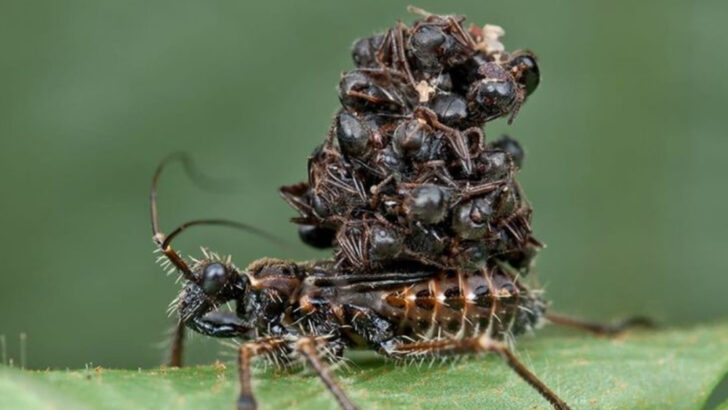This bug doesn’t just kill—it liquefies its victims from the inside out.
With a name like assassin bug, you know it’s not here to play nice. Armed with a needle-like beak and a venomous punch, this creepy crawler turns insects into soup before slurping them up like a smoothie.
There are over 7,000 species of assassin bugs lurking around the world, each one armed with its own gruesome tactics. Some wear corpses as camouflage. Others deliver a bite so painful it’s been compared to getting stabbed with a hot needle.
It’s deadly. It’s clever. And it might be hiding in your backyard.
Ready to meet the insect world’s most ruthless killer? Here are 11 shocking truths about the assassin bug that will make your skin crawl—and your curiosity spike.
Assassin Bug’s Weaponry
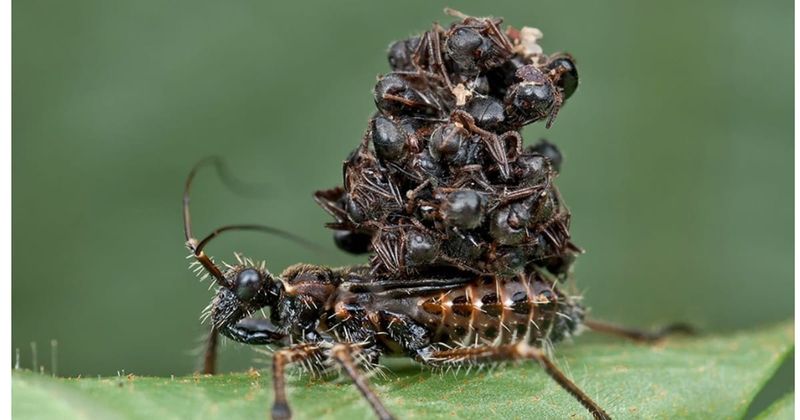
The assassin bug wields a proboscis that functions like a deadly weapon. This appendage isn’t just for show; it’s specifically designed to pierce and inject lethal enzymes into prey.
Within moments, these enzymes liquefy the victim’s insides, making it easy for the bug to suck them out. Such an efficient hunting tool, it’s no wonder this bug is feared in the insect world.
Interestingly, some species boast camouflaged proboscises, allowing them to ambush unsuspecting victims more effectively. The evolutionary design of this weapon is a testament to the bug’s adaptation to its predatory lifestyle.
Camouflage Mastery
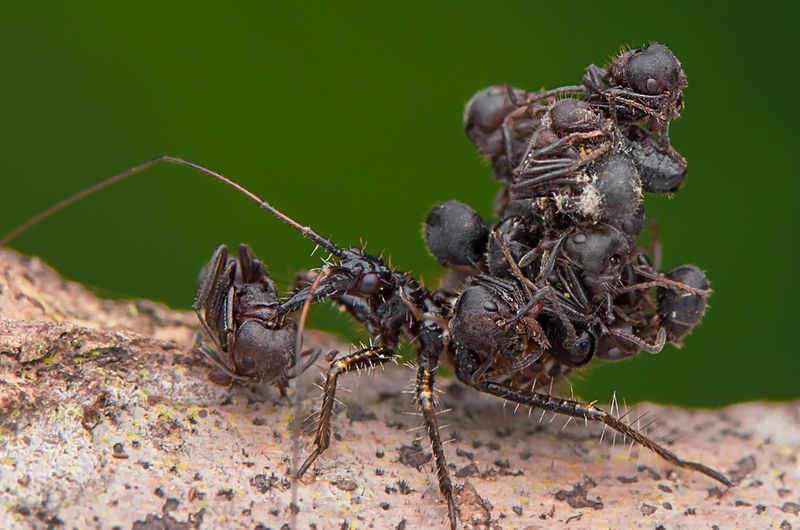
Blending into the environment is key to the assassin bug’s hunting success. With its natural ability to camouflage, it becomes nearly invisible to both prey and predators. This mastery of disguise allows it to patiently await the perfect moment to strike.
Each species boasts unique adaptations that enhance its ability to blend into specific habitats. Some resemble leaves, while others mimic twigs or bark. This camouflage not only aids in hunting but also provides protection from larger predators, making it a vital survival trait for the assassin bug.
Diverse Hunting Techniques
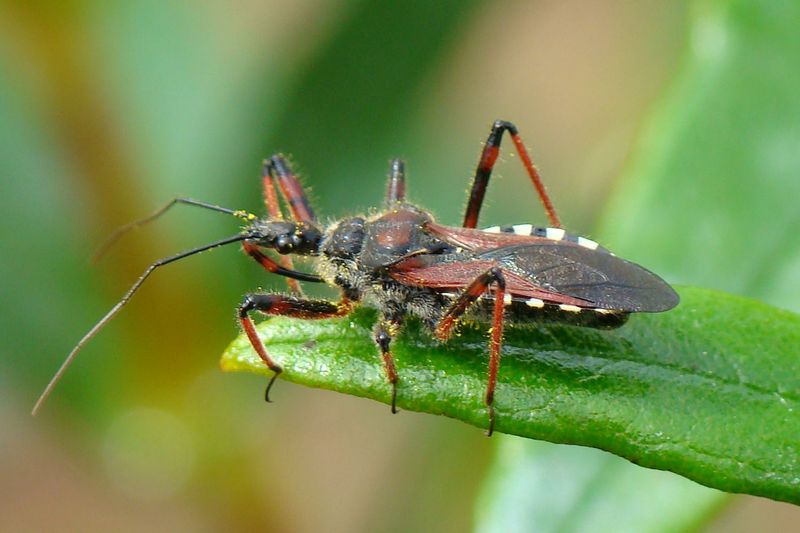
The assassin bug is a versatile predator, employing a range of hunting techniques to capture its prey. Whether it’s stalking its target with stealthy precision or lying in ambush, this bug adapts its strategy to suit the environment and prey type.
Some even mimic the movements of other insects to get closer to their victims. This adaptability not only showcases their intelligence but also their relentless pursuit of survival. Such diversity in hunting methods ensures they remain one of nature’s most effective small predators.
Role in Ecosystem
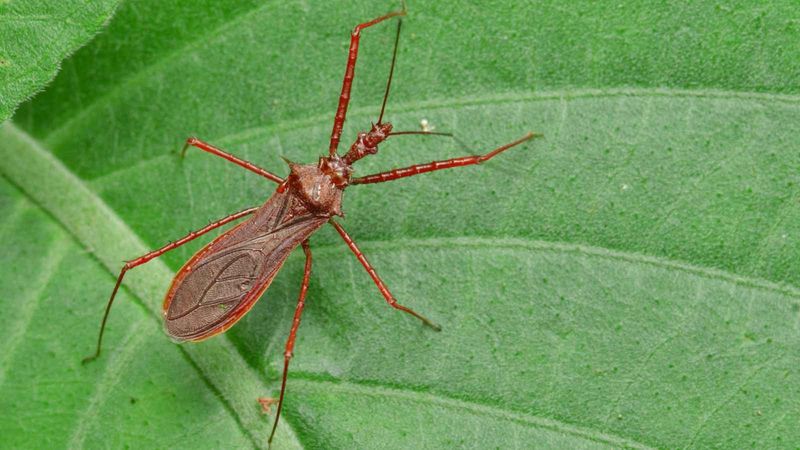
Assassin bugs play a crucial role in maintaining the balance of ecosystems. By preying on other insects, they help control pest populations, providing a natural form of pest management. This not only benefits crops but also supports biodiversity by preventing any one species from becoming too dominant.
Their presence is a sign of a healthy ecosystem, as they contribute to the intricate web of life. Despite their fearsome reputation, these bugs are essential players in their habitats, underscoring the importance of every species in maintaining ecological harmony.
Unique Reproduction
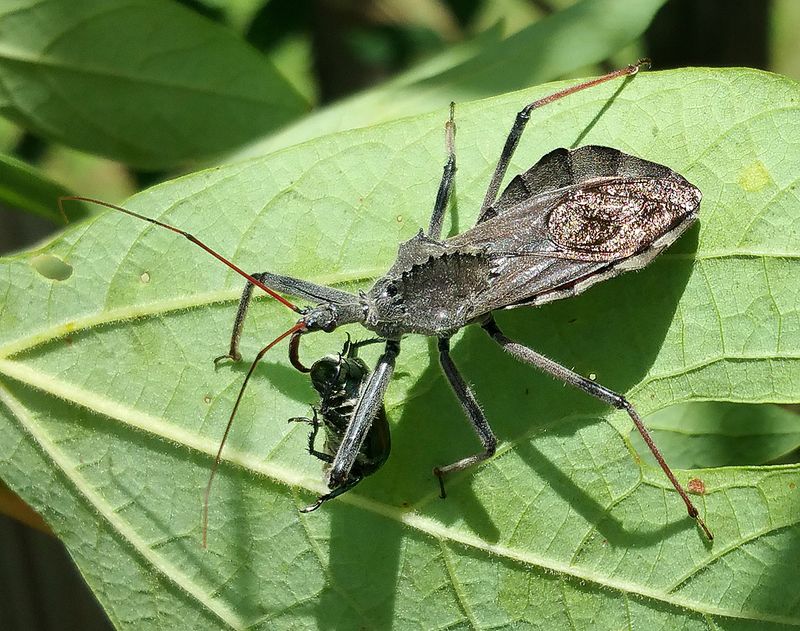
The reproduction habits of the assassin bug are as unique as its hunting techniques. Mating rituals can be elaborate, with intricate dances and displays. Once mated, the female lays eggs in hidden spots to ensure their safety.
Interestingly, some species have been observed to exhibit parental care, guarding their eggs from predators. This dedication to reproduction ensures the survival of the next generation. The lifecycle of an assassin bug, from egg to adult, highlights its resilience and adaptability in the wild.
Human Interaction

Assassin bugs have a complex relationship with humans. While they are beneficial in controlling pest populations, some species, like the kissing bug, pose risks. The kissing bug can transmit Chagas disease, a serious health concern in some regions.
Most assassin bugs, however, prefer avoiding human contact and are not aggressive unless provoked. Observing them in their natural habitat can be a fascinating experience, revealing their intricate behaviors and interactions with other species. Respecting their space is crucial to coexistence.
Defensive Mechanisms
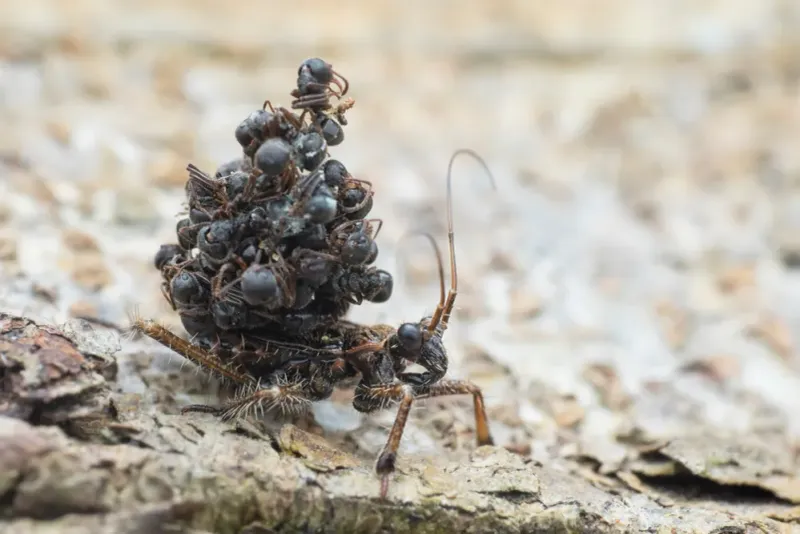
When threatened, the assassin bug has a few tricks up its sleeve to defend itself. Its forelegs are not just for hunting; they can be used to push away predators. Additionally, some species release foul-smelling chemicals to deter attackers.
These defense mechanisms are vital for survival in the wild, where threats are ever-present. The combination of physical and chemical defenses makes the assassin bug a resilient insect in the face of danger. Such adaptations ensure its continued success across diverse environments.
Varied Diet
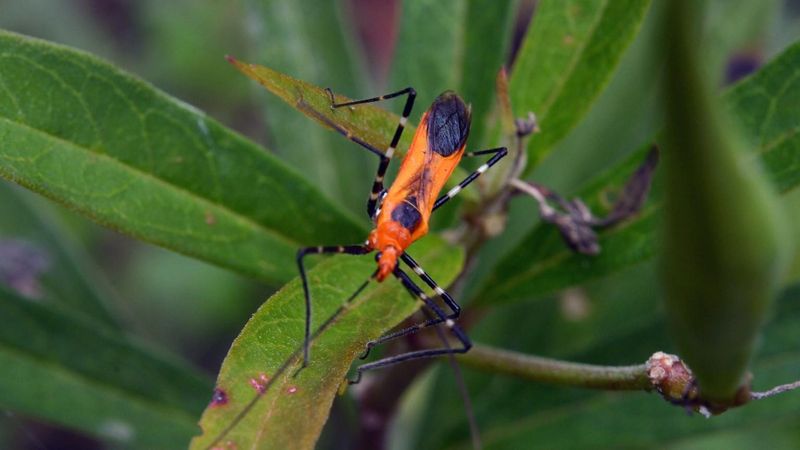
The diet of an assassin bug is as varied as its habitats. These bugs are not picky eaters, preying on a range of insects such as flies, beetles, and caterpillars. This versatility in diet helps them thrive in different environments and maintain their role as effective pest controllers.
Some species even consume other assassin bugs, showcasing their opportunistic nature. This varied diet ensures they remain a step ahead in the food chain, adeptly adapting to available food sources and environmental changes.
Surprising Speed
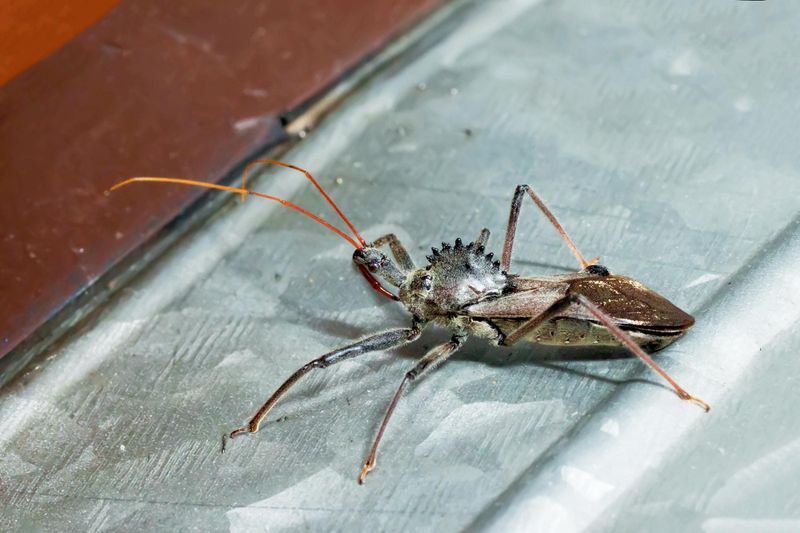
Though they might not look it, assassin bugs are surprisingly quick movers. Their speed is a key factor in their hunting success, allowing them to catch prey that might otherwise escape.
This agility is complemented by their keen senses, making them formidable predators in their micro-world. Whether darting through foliage or pouncing on an unsuspecting victim, their speed is a testament to their evolutionary refinement. Such quick movements are crucial for seizing opportunities in the wild, showcasing their predatory prowess.
Global Presence
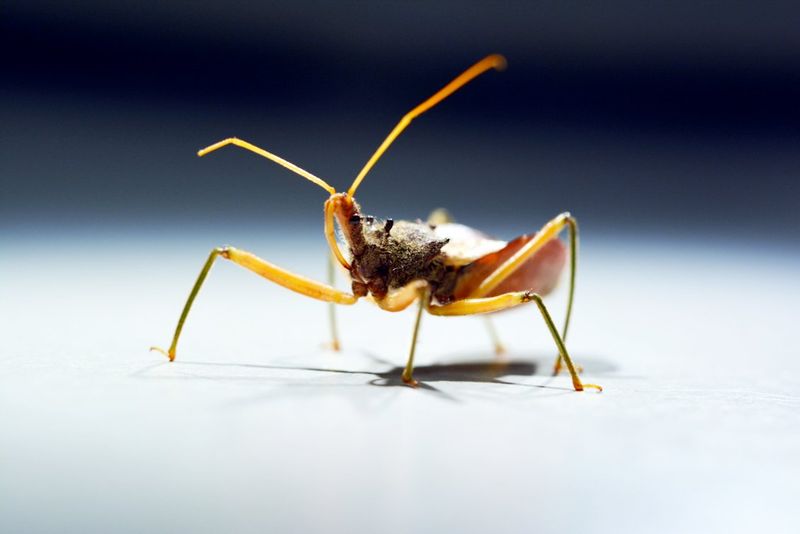
Assassin bugs are not confined to a single region; they have a global presence, inhabiting diverse environments from tropical rainforests to temperate zones. This widespread distribution is a testament to their adaptability and resilience.
Different species thrive in varying climates, each uniquely adapted to its surroundings. This global reach underscores their evolutionary success, making them a common yet intriguing insect family worldwide. Their presence across continents highlights their ecological importance and fascinating diversity.
Mythology and Folklore
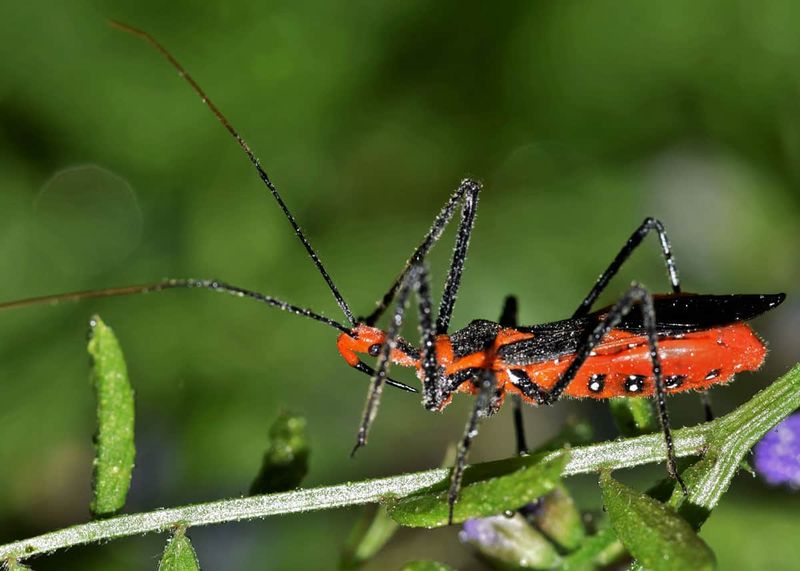
Throughout history, the assassin bug has found its way into various myths and folklore, often portrayed as a symbol of stealth and cunning. In some cultures, its presence is seen as an omen, a creature to be both respected and wary of.
These stories often highlight the bug’s enigmatic nature, weaving tales that blend fact with fantasy. Such cultural significance adds an intriguing layer to its biological reality, showcasing the intersection of nature and human imagination. Mythology and folklore offer a glimpse into how people perceive and relate to the natural world.

